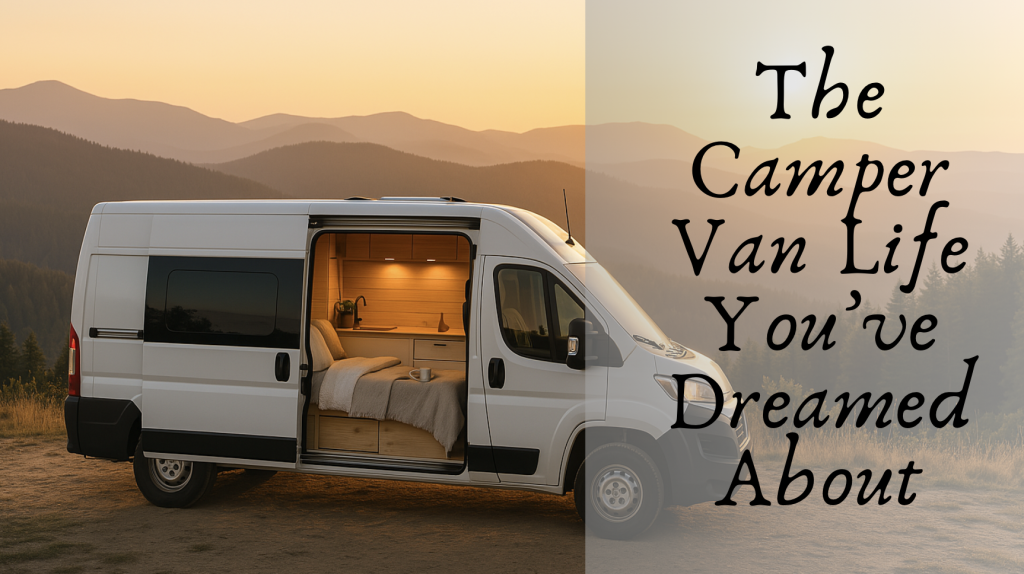Ever wondered what it’s like to wake up to ocean waves one day and mountain views the next? Camper van life offers this freedom—a lifestyle that’s captured the imagination of thousands seeking something different from the traditional path.
Beyond pretty social media pictures lies a real way of living that combines simplicity with constant change, challenges with incredible rewards.
From solo travelers to families with pets, people are trading fixed addresses for homes on wheels, creating lives filled with movement and possibility.
We’ll pull back the curtain on what van life truly involves: the practical realities, the unexpected joys, and the genuine challenges. Ready to see if life on the road might be for you? Let’s hit the road together.
What Is Camper Van Life Really Like?
Living in a camper van isn’t just a trend—it’s a lifestyle choice that’s catching on for good reasons. It’s a world where your morning coffee spot changes with your mood, where possessions are few but meaningful, and where freedom trumps comfort.
The walls may be close, but the horizon is endless. For many, it represents an escape from rent cycles and office walls, offering instead a life where Tuesday might mean beachside work and Friday could bring mountain hiking.
The road becomes both home and pathway, constantly revealing new possibilities with each turn. Let’s look at what this mobile way of living truly offers beyond the pretty social media pictures.
1. Van Life Basics
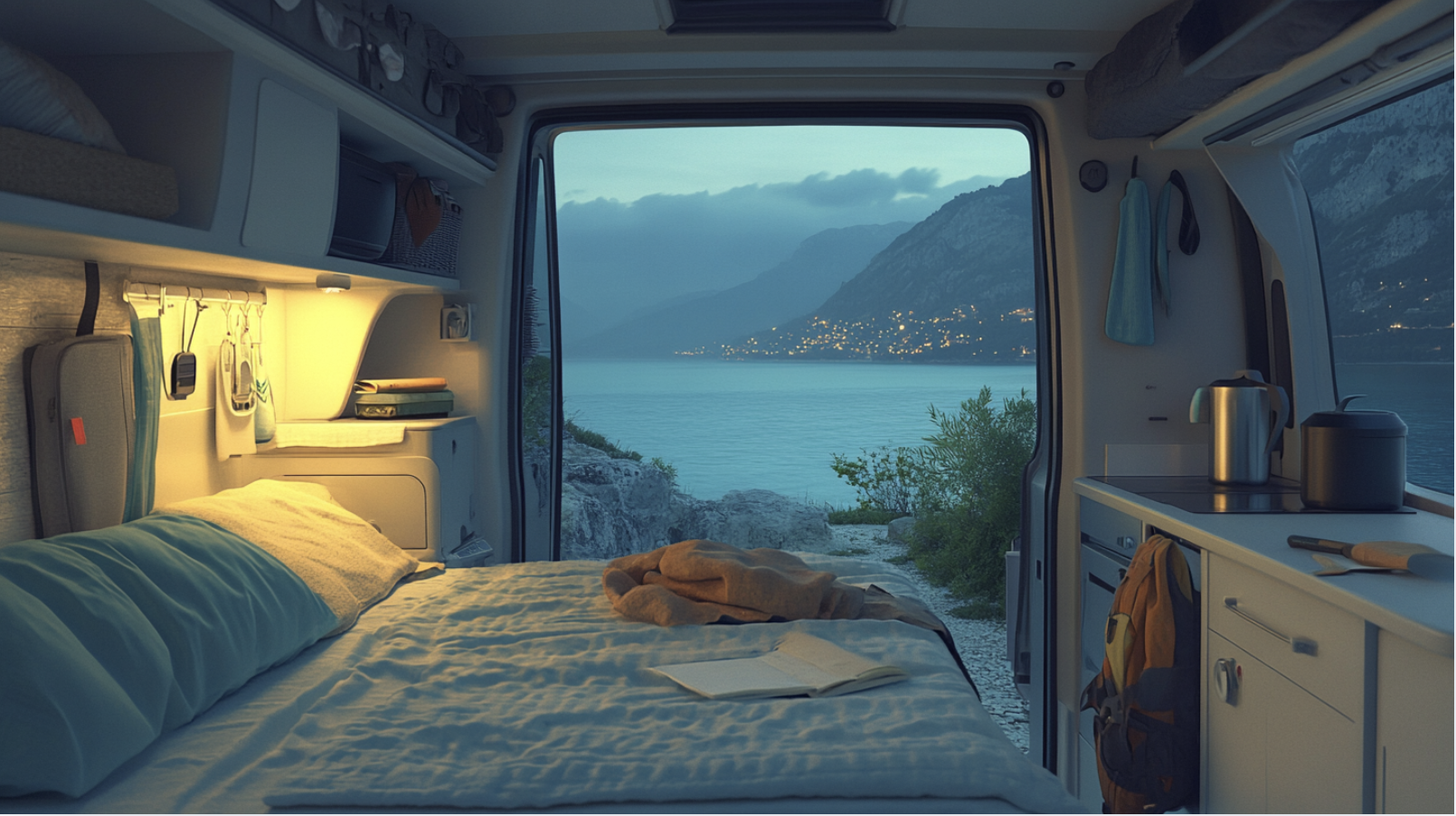
Camper van life means making a vehicle your home, either full-time or for extended trips. It’s about:
- Trading fixed walls for wheels and windows that show a new view each day
- Fitting your essentials into a compact space that moves with you
- Finding the balance between comfort and mobility
- Creating a home that can park beside oceans, mountains, or city streets
The beauty lies in its simplicity—you carry only what matters while leaving room for experiences.
2. The Good Parts (That Nobody Talks About)
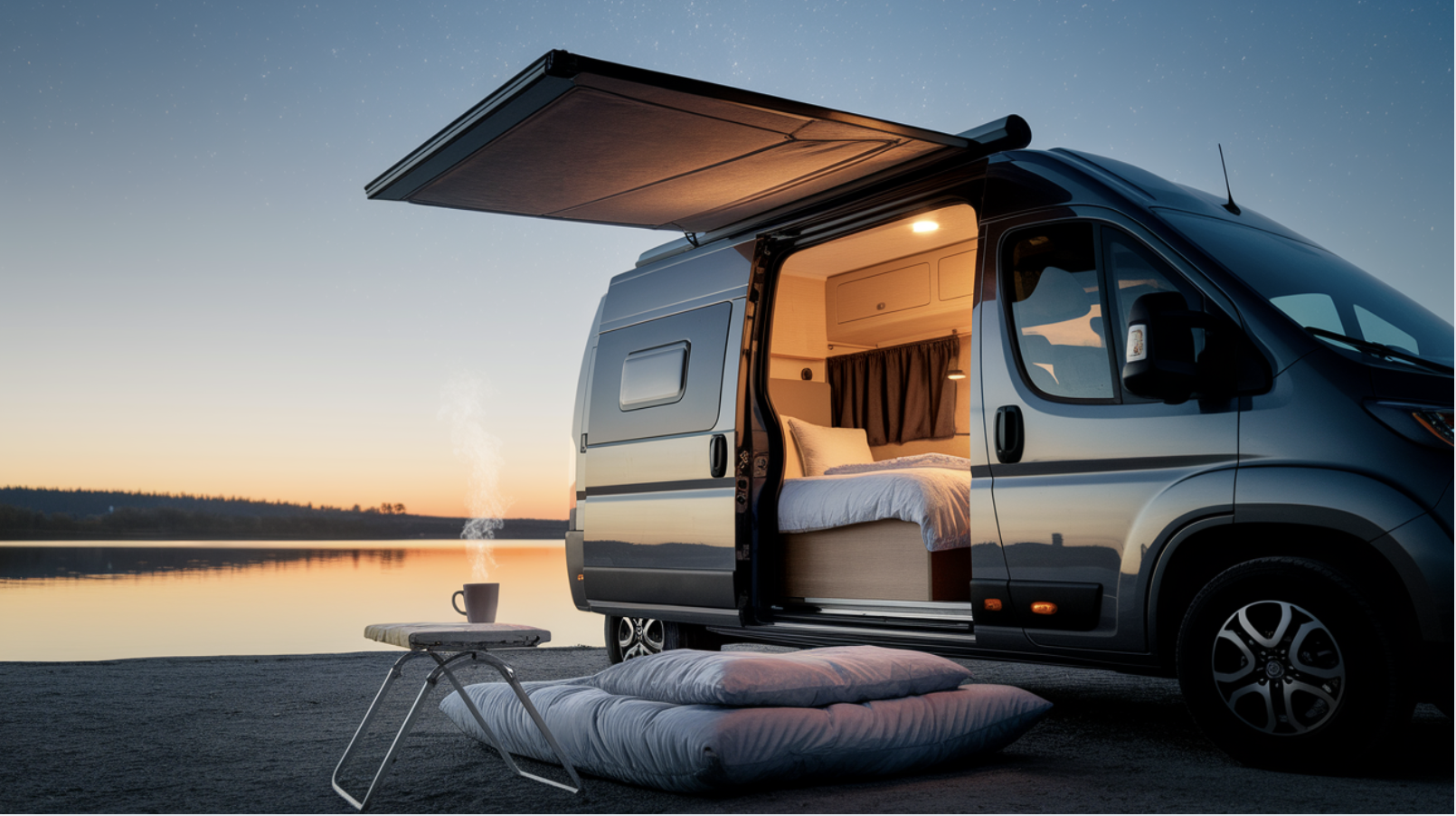
Living on the road comes with hidden joys:
- Morning coffee spots that change daily—sometimes beside lakes, sometimes with mountain views
- No cleaning schedule beyond a quick 15-minute tidy (the whole space is only 60-80 square feet!)
- Stars as your ceiling when you park in remote areas
- Quick decision-making when you realize you don’t like an area—just drive to the next spot
There’s something deeply satisfying about having everything you need within arm’s reach.
3. The Tough Stuff (Being Honest)
Let’s be real about the challenges:
| CHALLENGE | REALITY |
|---|---|
| Bathroom situation | Using public facilities or installing compact solutions |
| Weather dependence | When it rains for days, your space feels much smaller |
| Work-life boundary | Your office is often your kitchen, bedroom, and living room |
| Privacy | Limited alone time when traveling with others |
These hurdles aren’t dealbreakers, but they require creativity and patience to overcome.
4. Is This For You?

Before jumping in, ask yourself:
- Can you handle uncertainty and changing plans?
- Do you find joy in simple living?
- Are you okay figuring things out as you go?
- Does the thought of waking up in new places excite you?
Try a weekend rental or a weeklong trip before making big commitments. The lifestyle has magic to it, but it’s not for everyone—and that’s perfectly okay. The road beckons with its open-ended invitation. Will you answer?
Must-Know Basics Before You Begin
Starting van life requires some key decisions that will shape your entire experience. While the freedom of the road beckons, a bit of planning makes all the difference between an adventure and a headache.
1. Van Selection: Finding Your Mobile Home

Different vans offer different lifestyles. Big options like Ford Transit or Mercedes Sprinter give you room to stretch but can be challenging to maneuver through narrow streets or find parking.
Medium choices strike a balance, while compact vans like the Citroen Berlingo let you park almost anywhere but significantly limit your living space.
The right choice comes down to your priorities:
- Will you work remotely and need desk space?
- Do you want to stand up inside?
- Will you travel through cities with narrow streets or stick to open highways?
Fun Fact: The average van dweller tries 2-3 different vehicles before finding their perfect match. Your first van rarely ends up being your forever van!
2. The Build Decision: DIY vs. Professional
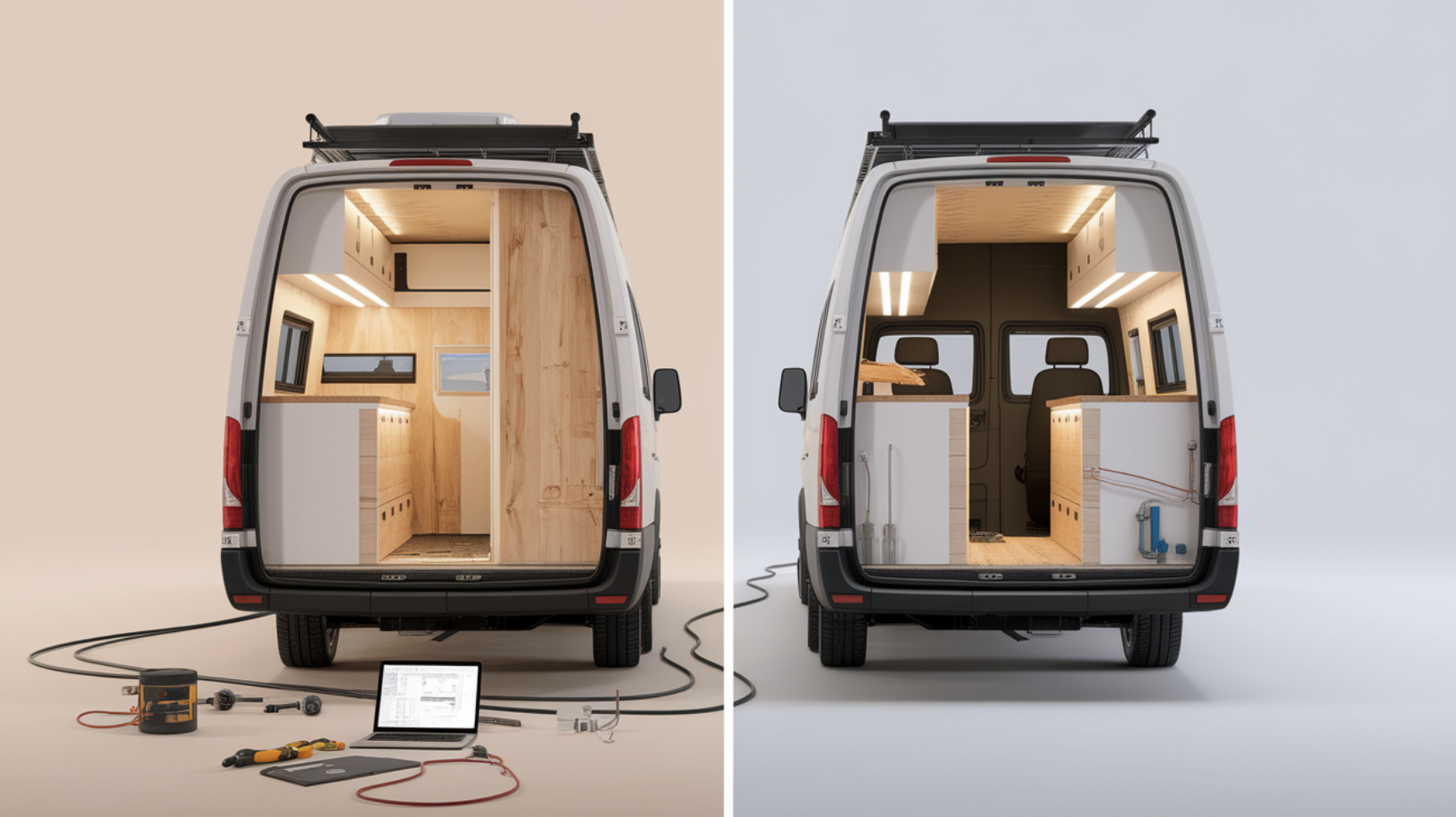
The DIY route costs roughly £10,000-30,000 all-in and gives you total control over your space. You’ll learn new skills and develop a deep connection to your home, but expect to spend 3-6 months building if you’re new to construction.
Many first-timers underestimate the time commitment by 50% or more. Professional builds run from £45,000 to well over £200,000 for luxury conversions.
For beginners, a hybrid approach often works best—have professionals handle complex systems like electrical and plumbing while you tackle more straightforward jobs like furniture building and decoration.
3. Budget Reality Check
Before diving into your build, it’s crucial to understand the financial landscape of van conversions. Most newcomers underestimate costs by 30-40%, leading to compromises or abandoned projects.
| BUILD LEVEL | COST RANGE | WHAT YOU GET |
|---|---|---|
| Basic DIY | £10,000-15,000 | Simple setup, essentials only |
| Mid-range | £25,000-45,000 | Comfortable living, some luxuries |
| High-end | £60,000-100,000+ | Full amenities, custom everything |
Remember to factor in the base vehicle cost separately! And don’t forget about ongoing expenses—insurance tends to be higher for converted vehicles, and fuel economy is typically 15-20 mpg for larger vans.
4. Try Before You Buy
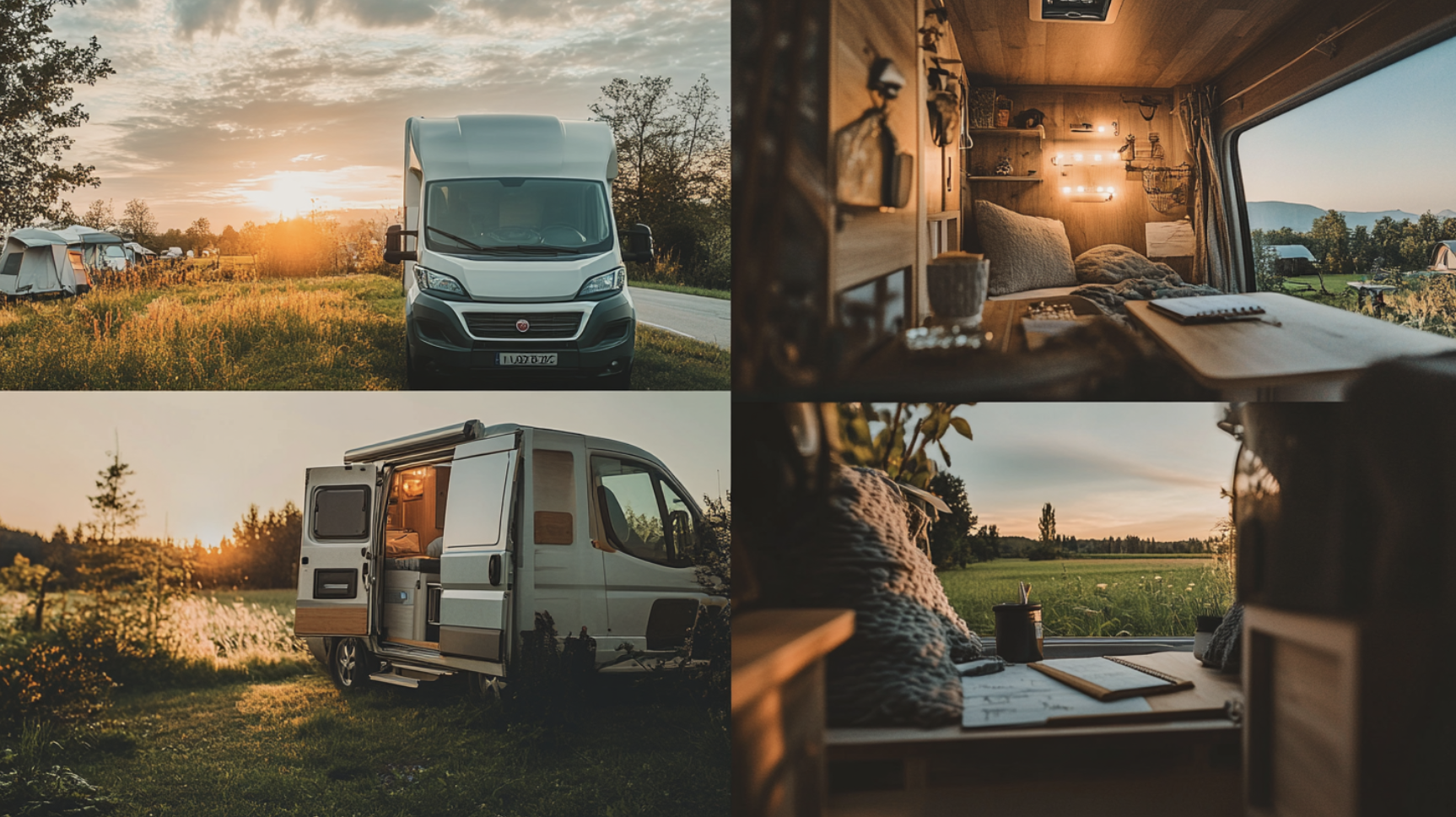
The smartest move? Live the lifestyle temporarily before committing. Rent a similar van for 7-10 days and keep detailed notes on what works and what doesn’t.
Try staying in different settings—urban areas, rural spots, and formal campsites—to see what environment suits you best.
Pro Tip: Test your rental in various weather conditions, if possible. Many van lifers report that their initial designs failed when tested against real-world rain, cold, or extreme heat.
Everyday Living on the Road
The daily realities of van life require practical solutions to basic human needs. Once you get past the Instagram-worthy moments, here’s what actually fills your days:
1. Bathroom Situations
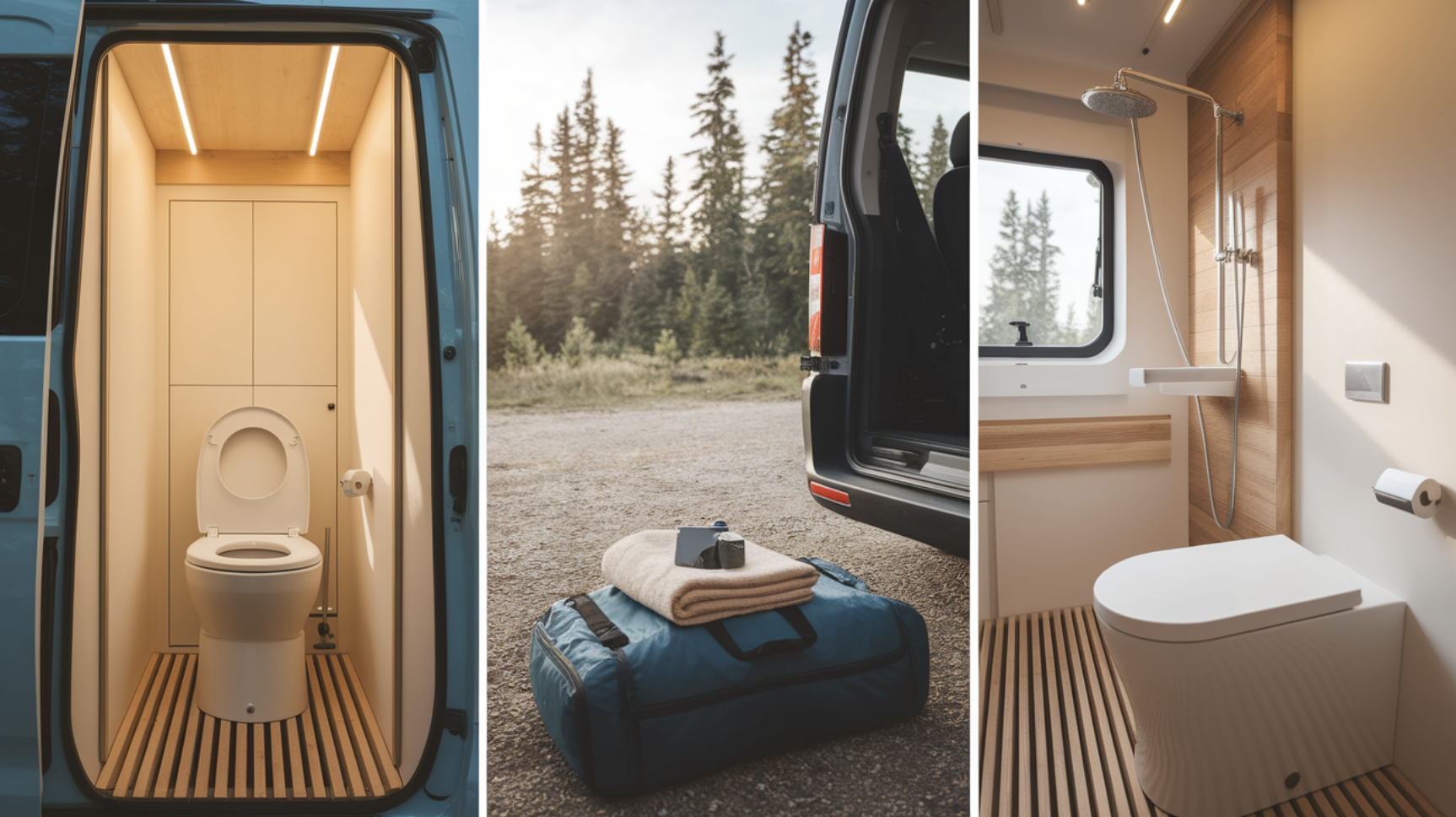
Toilet options range from composting systems (eco-friendly but pricier at $900-1,200) to basic cassette toilets common in Europe ($80-300).
The composting option needs emptying only every 3-4 weeks, while cassette systems require more frequent attention every 2-4 days.
For showers, you have choices: built-in systems (which demand significant water storage), portable pressure showers, or relying on external facilities through gym memberships or campgrounds.
2. Climate Control That Works

Diesel heaters have become the gold standard for cold-weather living, using minimal power while providing reliable warmth.
For summer months, roof fans with rain sensors prove essential. The ability to keep air flowing even during light rain can make the difference between comfortable sleep and a sweaty, restless night.
When temperatures truly soar, the most experienced van lifers simply change elevation or location—one of the greatest advantages of a home on wheels.
3. Water & Laundry Solutions

After a few weeks on the road, water management becomes second nature. You’ll develop an intuitive sense of your usage patterns and learn to spot potential water sources everywhere you go.
Campgrounds offer the most reliable access, but you’ll discover public taps in parks, certain gas stations, and through apps like iOverlander that map free water points.
Laundry requires a similar adaptive approach. Laundromats become regular stops every 10-14 days, while quick-dry fabrics and wool items (which naturally resist odors) help extend the time between washes.
4. Practical Kitchen Setup
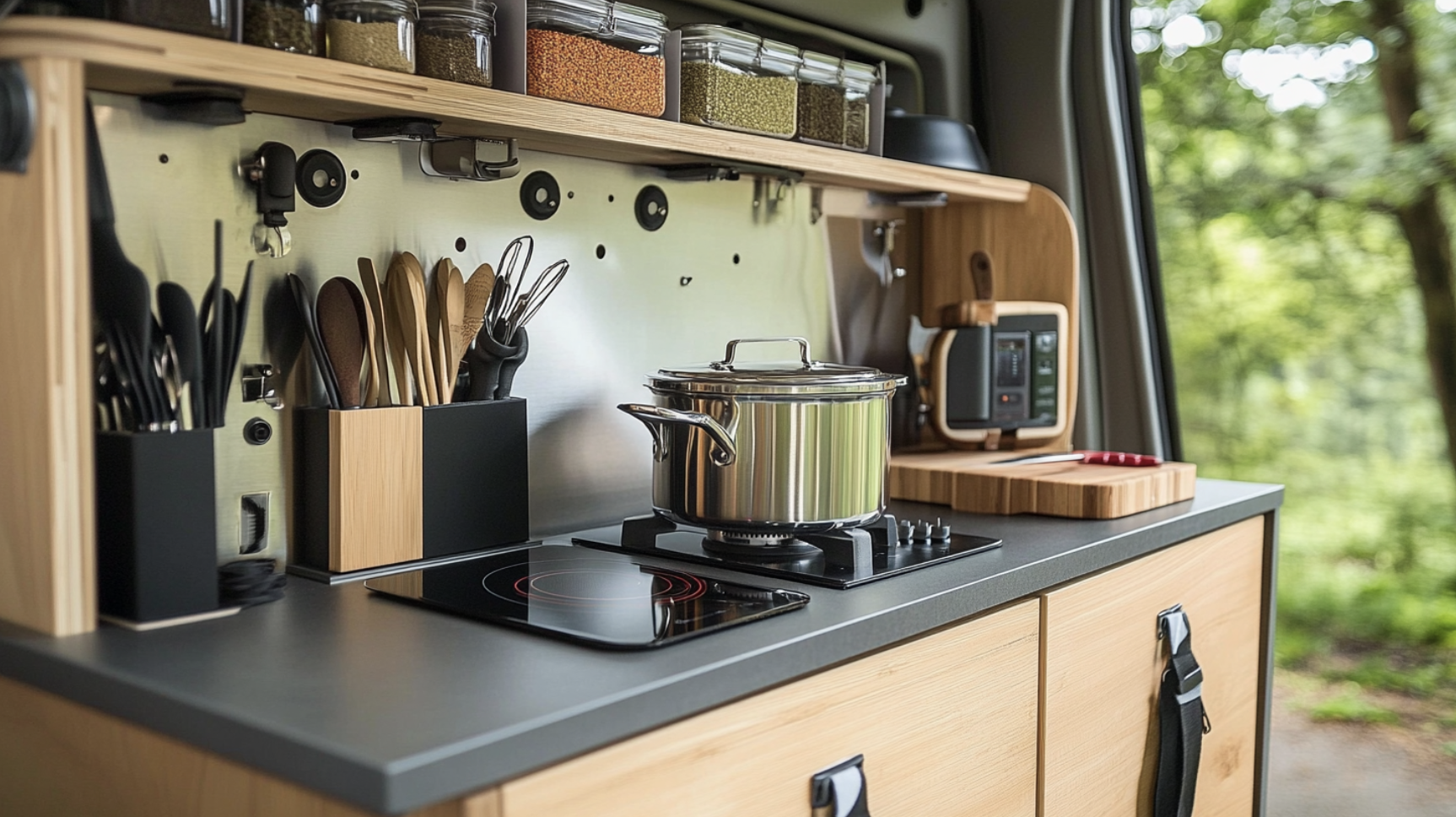
Smart cooking in small spaces means embracing efficiency: single-burner induction cooktops work beautifully if you have a good battery setup, while pressure cookers let you prepare meals quickly while conserving fuel.
Magnetic spice tins attached to metal surfaces and collapsible items (bowls, kettles, measuring cups) maximize function while minimizing footprint.
Pro Tip: Keep a small herb garden of basil, mint, and chives going in your window. These fresh ingredients make even simple meals taste special and create a homey atmosphere in your mobile space.
Managing Work, Wi-Fi, and Money
The romantic notion of van life often skips over an essential question: how will you fund your adventures? Today’s road warriors have found creative solutions that blend traditional and modern approaches.
1. The Remote Income Reality

Most successful van dwellers rely on location-independent income streams. Digital nomad roles in programming, design, and customer service top the list, but there’s an impressive variety in how people make it work.
Seasonal work creates another rhythm—some van lifers follow harvest seasons on farms or work summer months at national parks, then travel during off seasons.
2. Staying Connected Everywhere
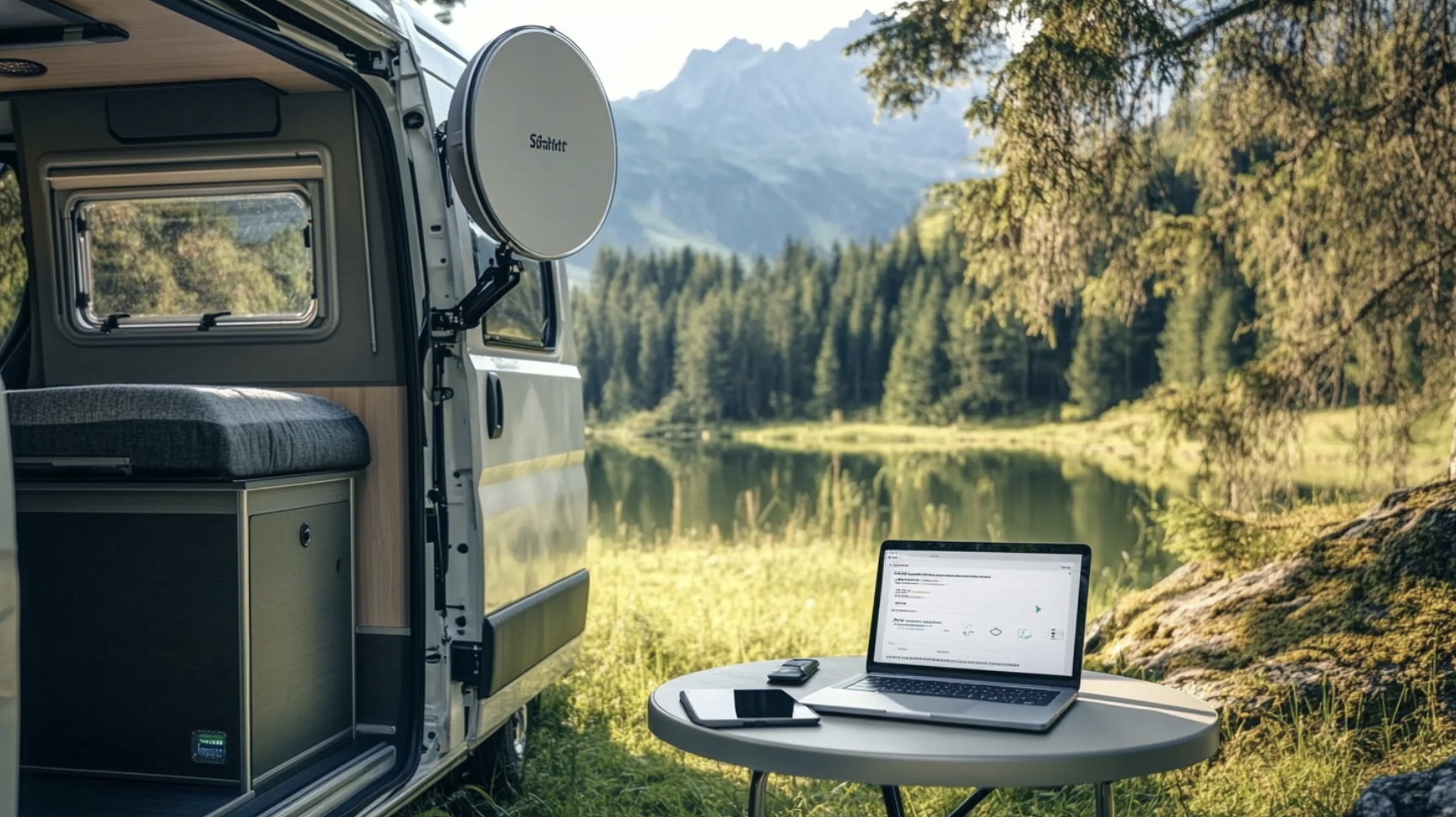
Internet access has revolutionized van life possibilities. Your options include:
- Starlink: Game-changing for remote areas but requires roof space and power
- Mobile hotspots: More affordable but dependent on cell coverage
- Signal boosters: Extend existing signals but won’t create connections where none exists
Most experienced van lifers maintain redundant systems—perhaps a good hotspot plan plus knowledge of reliable public Wi-Fi locations.
Pro Tip: Download offline maps, work documents, and entertainment before heading to remote areas.
3. Money Management On Wheels

The savings on housing can quickly vanish through campsite fees, fuel costs, and restaurant meals if you’re not careful. Smart van lifers track expenses meticulously during their first months to establish realistic budgets.
Apps like GasBuddy help locate cheaper fuel, while membership programs like Harvest Hosts offer free overnight parking at wineries and farms.
Staying Safe, Sane, and Social
Finding the balance between solitude and community, safety and new experiences becomes a daily practice that shapes your journey on the road.
Creating Security Anywhere
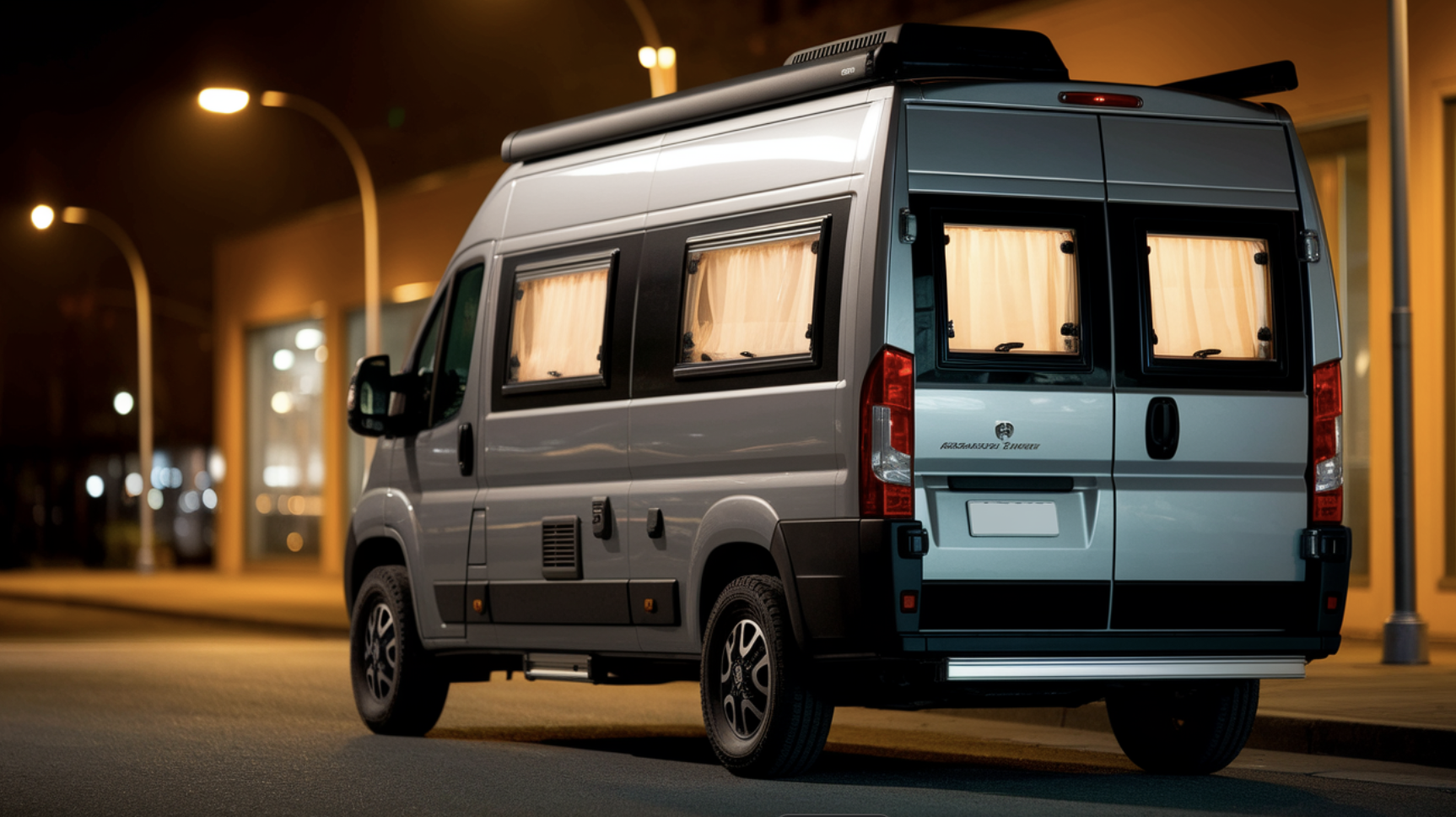
Physical security starts with basics: quality door locks, window coverings, and an inexpensive alarm system. Many van dwellers install hidden compartments for valuables.
Well-lit areas near other campers often feel safer than isolated spots, though preferences vary. Some prefer “stealth camping” in urban areas, keeping their vehicle looking ordinary.
Health Matters On The Move
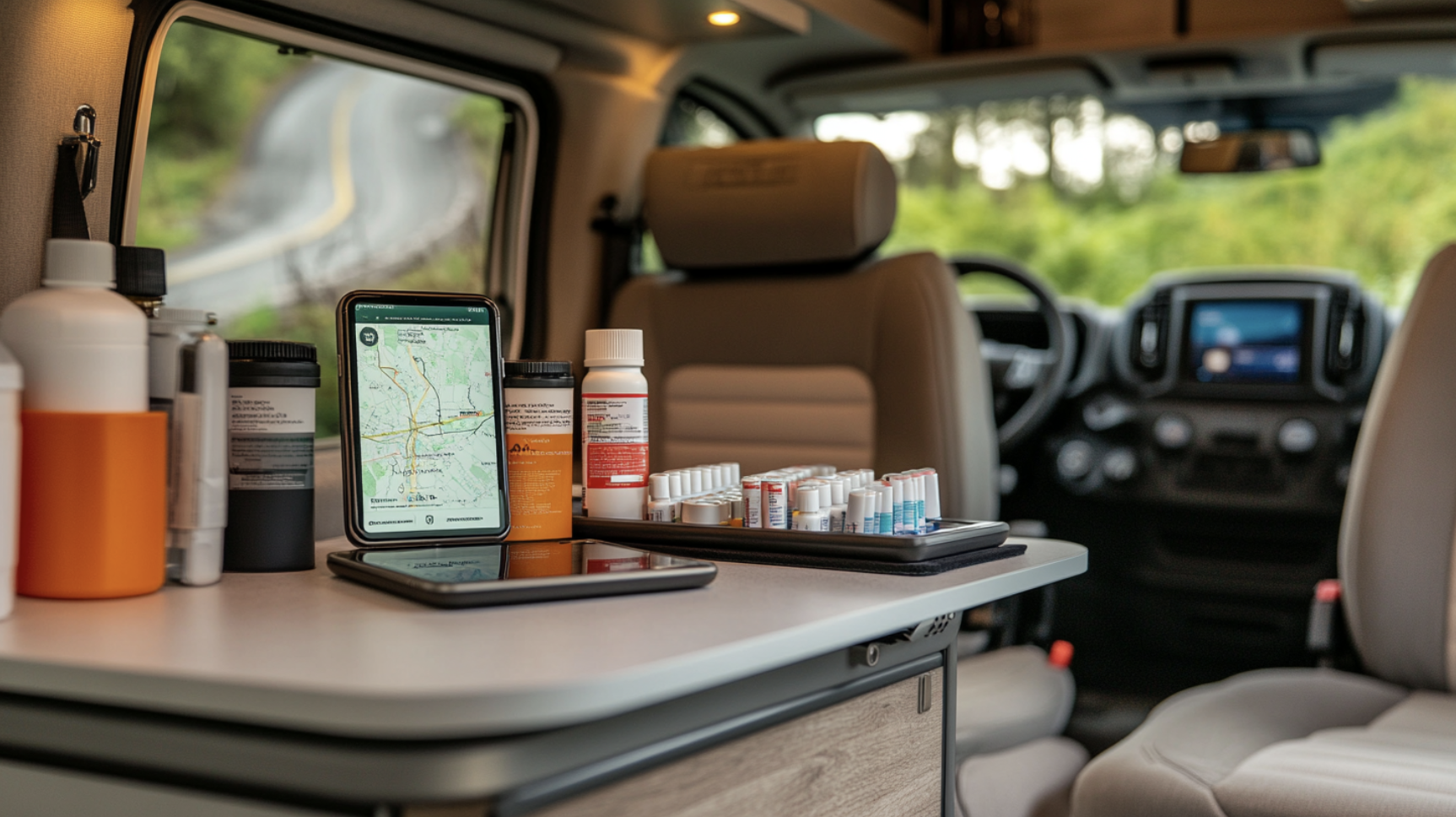
Travel insurance becomes essential, as does knowing which healthcare providers accept your coverage across regions.
Many nomads maintain a home base address for prescriptions and establish relationships with providers who offer telehealth options.
For seniors considering van life, researching medical facilities along planned routes becomes part of regular travel preparation.
Finding Your Tribe
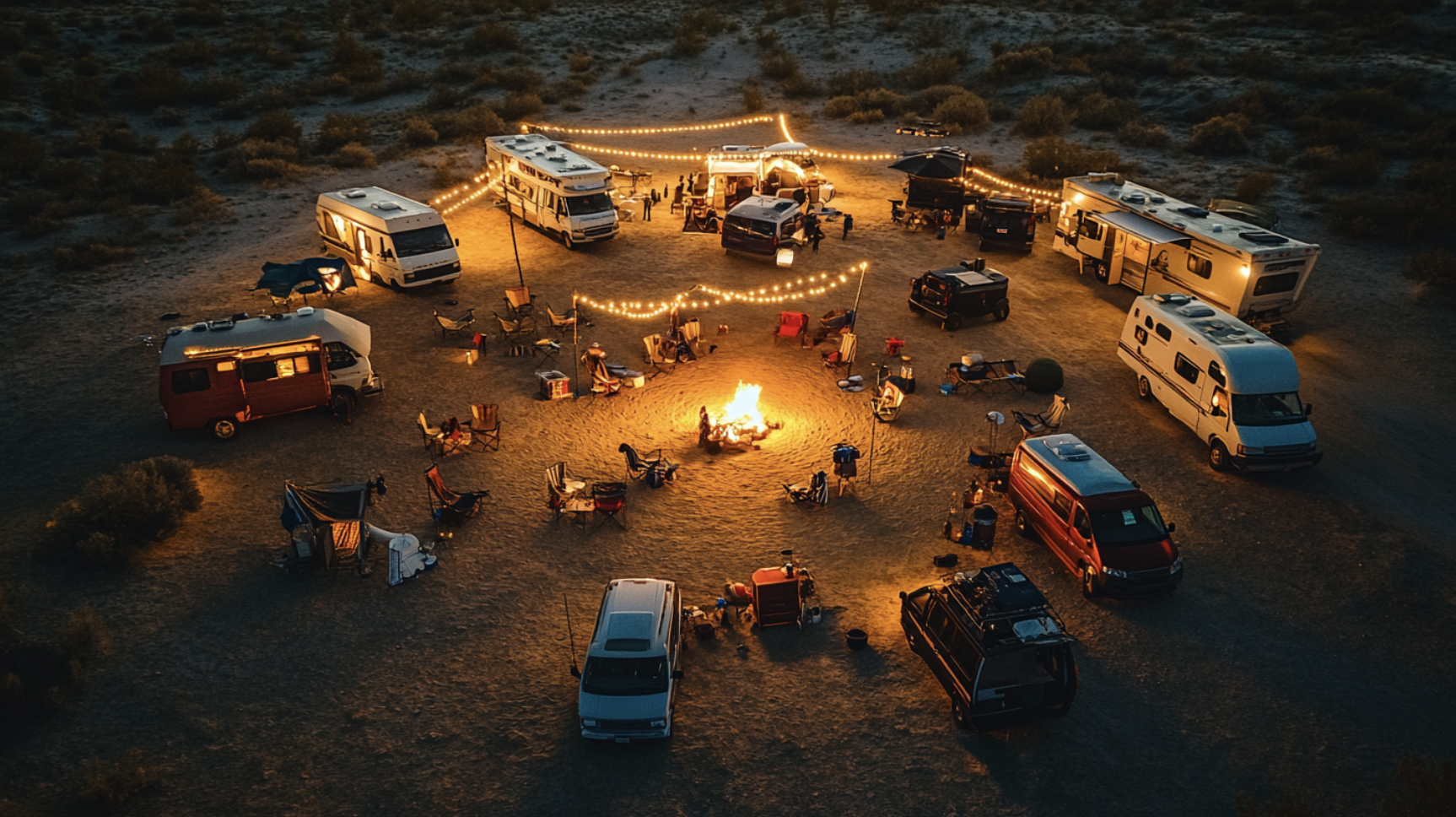
The van life community offers unexpected depth and connection. Organized meetups through apps like iOverlander help nomads find each other, while Facebook groups organize gatherings ranging from casual parking lot meetups to formal festivals.
Many report forming deeper connections on the road than in years of traditional living. Shared experiences and mutual support create bonds that transcend typical acquaintanceships.
Lifestyle Tips & Lessons from the Road
Those who’ve embraced van life long-term have wisdom worth hearing. Their practical insights help newcomers avoid common pitfalls.
1. Mastering Minimal Living
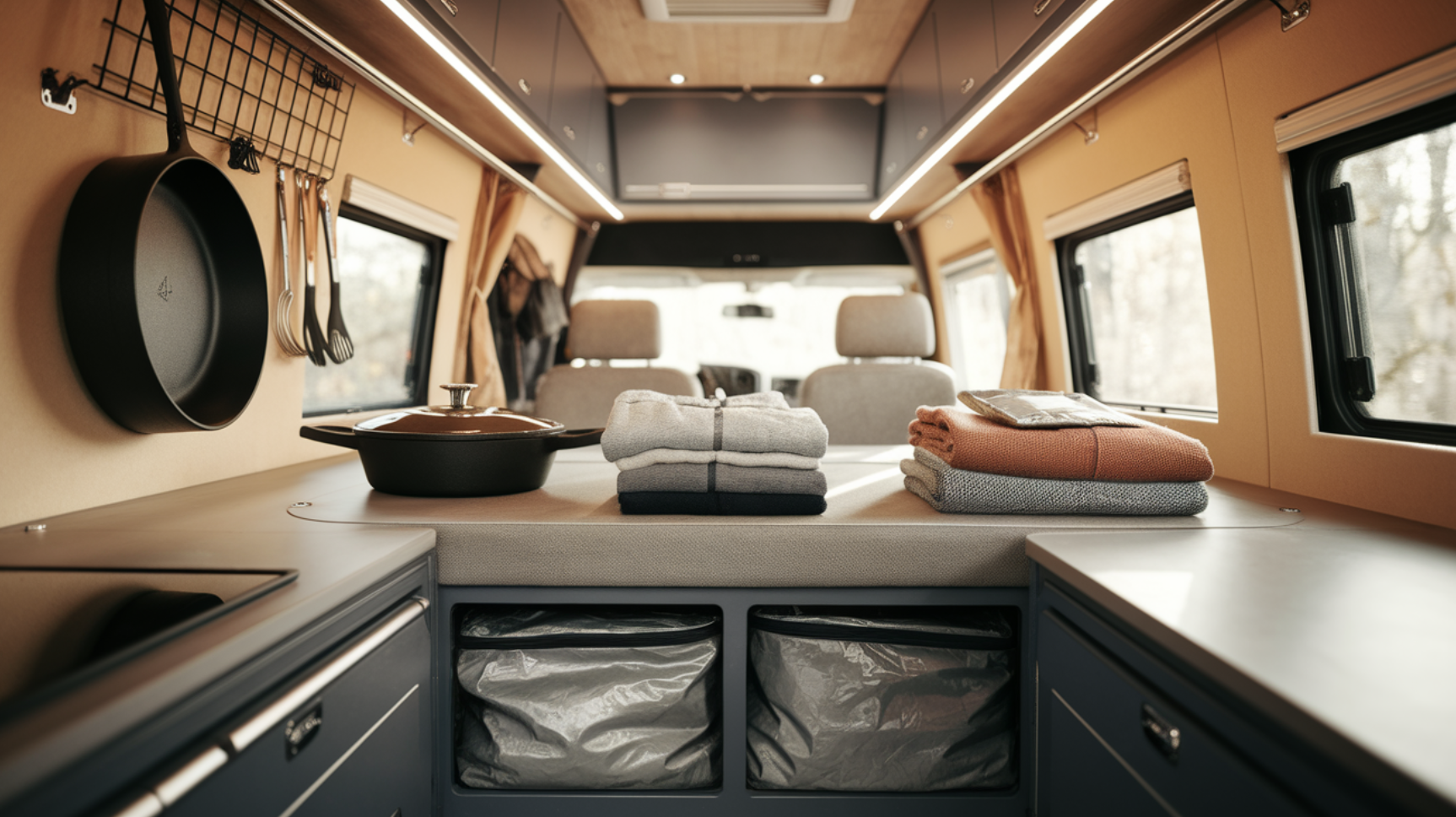
Successful van dwellers follow some version of the “one in, one out” rule—nothing new comes aboard without something else leaving.
Quality trumps quantity every time. A single excellent cooking knife outperforms a cheap set. Multi-purpose items earn their space: a cast iron pan that works on stoves and campfires; clothing layers that function across temperature ranges.
Storage solutions become an ongoing creative project. Magnetic strips hold metal tools, tension rods create adjustable dividers, and vacuum bags compress seasonal clothing.
2. Family Life on Wheels
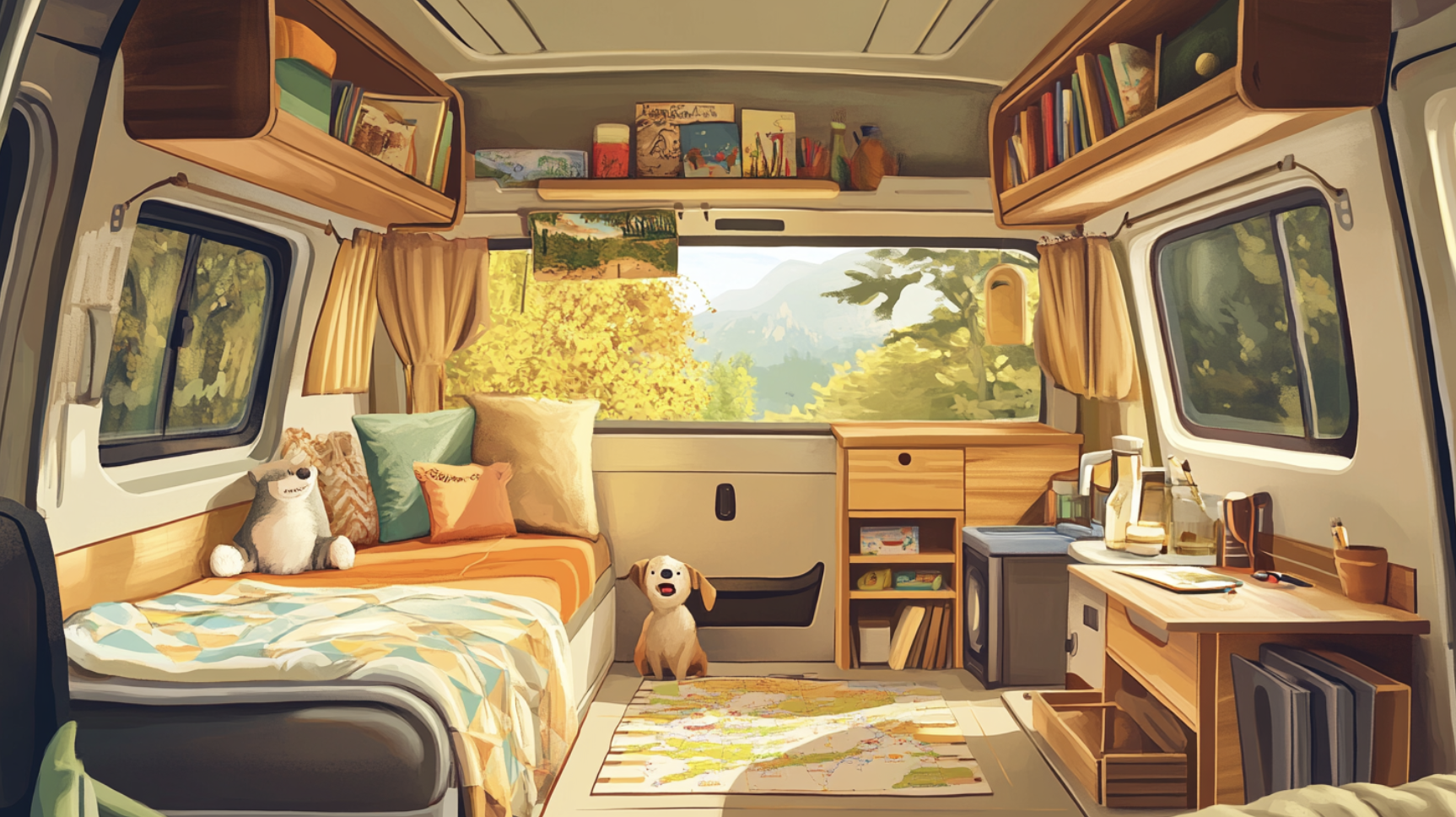
Traveling with children or pets remains entirely possible. Family-friendly layouts often include designated kid spaces with activities and storage for toys. Establishing predictable routines helps children thrive despite changing locations.
For pets, consistency in feeding schedules and walking times provides stability. Many van designs now include specific pet accommodations—secured travel crates and feeding stations.
The educational opportunities for children living this lifestyle prove extraordinary. Many families incorporate formal curriculum with real-world experiences, visiting historical sites and natural wonders.
3. Embracing the Mindset Shift

Residents describe developing greater adaptability, reduced attachment to material things, and heightened appreciation for experiences.
Weather patterns, rather than work schedules, often dictate daily rhythms. Sunrise and sunset return to prominence as natural timepieces.
The most successful van lifers aren’t those with the most expensive vehicles or Instagram-perfect interiors. They’re the ones who’ve thoughtfully aligned their mobile lifestyle with their authentic values.
Wrapping It Up!
Camper van life isn’t just a way to travel—it’s a complete shift in how you experience the world. The road offers lessons you can’t find elsewhere: how little you truly need, how adaptable you really are, and how connecting with places deeply trumps checking them off a list.
Some try it for months, others for years, but everyone walks away changed. The simplicity reveals what matters most in your life. The challenges build resilience you’ll carry forever. The community shows how strangers become family.
Your perfect van life might look nothing like someone else’s—and that’s the beauty of it. The open road doesn’t promise perfection, but it delivers something better: the space to create a life that feels entirely your own.

